The History of Auschwitz: Everything You Must Know
Auschwitz is the symbol of the horror of the Holocaust. In occupied Poland, this concentration and extermination camp complex was the hub of the Nazi’s genocidal campaign against the Jews and other minorities during World War II.
The name Auschwitz means terror, inhumanity, and the worst of humanity. Knowing the history of Auschwitz before visiting is instrumental. Here below, we go into the key moments of Auschwitz’s history from its beginning to its liberation and how it became the most notorious camp of the Holocaust.
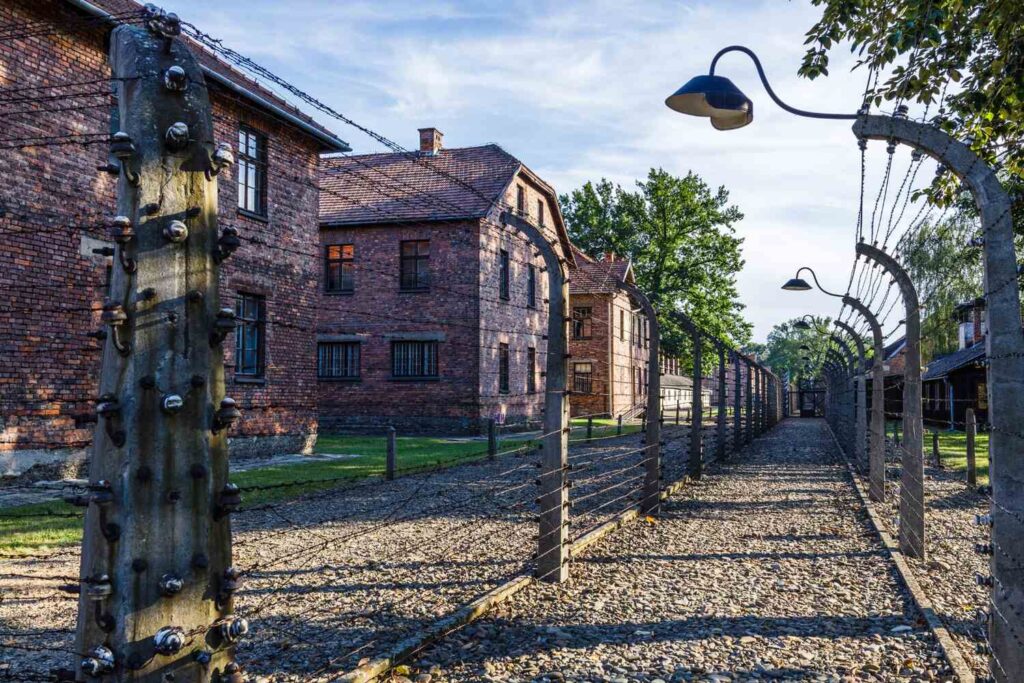
The History of Auschwitz – Timeline
- 1940: Auschwitz I was established to imprison political detainees.
- 1942: Mass deportations of Jews all over Europe to Auschwitz-Birkenau began; the first gas chamber became operational.
- 1943: Auschwitz became a central site for the mass extermination of Jews; Auschwitz III-Monowitz was founded the same year.
- 1944: Hungarian Jews were deported en masse to Auschwitz-Birkenau, with gas chambers running at full capacity; the Sonderkommando uprising occurred in October.
- 1945: Soviet forces liberated Auschwitz-Birkenau, finding over 7,000 survivors.
- 1947: The Polish government opened the Auschwitz State Museum at the former campsite.
- 1979: UNESCO recognized Auschwitz-Birkenau as a World Heritage Site.
- Today: Auschwitz-Birkenau stands as a memorial visited by people worldwide, remaining a powerful symbol of the Holocaust.
Origins of Auschwitz and Oświęcim
Before World War II, Oświęcim was a small Jewish community in southern Poland. A vibrant town with a strong culture and economy, thousands of Jews lived alongside their Polish neighbours.
When Nazi Germany invaded Poland in 1939, Oświęcim was annexed to the Third Reich and renamed Auschwitz, the German name of the town.
Today, when going from Krakow to the concentration camps, Oświęcim is one of the best places to stay when visiting Auschwitz, so you might want to spend the night here before going the morning after.
Auschwitz I (The Main Camp)
In May 1940 the Nazis established Auschwitz I, initially to house Polish political prisoners, resistance members, intellectuals, and other people considered a threat to Nazi control.
The location was chosen for its isolation and accessibility by railway, allowing for the transportation of large numbers of prisoners. Conditions were brutal from the start, overcrowding, forced labour, starvation, and disease. Executions were common and the camp quickly gained a reputation for being harsh.
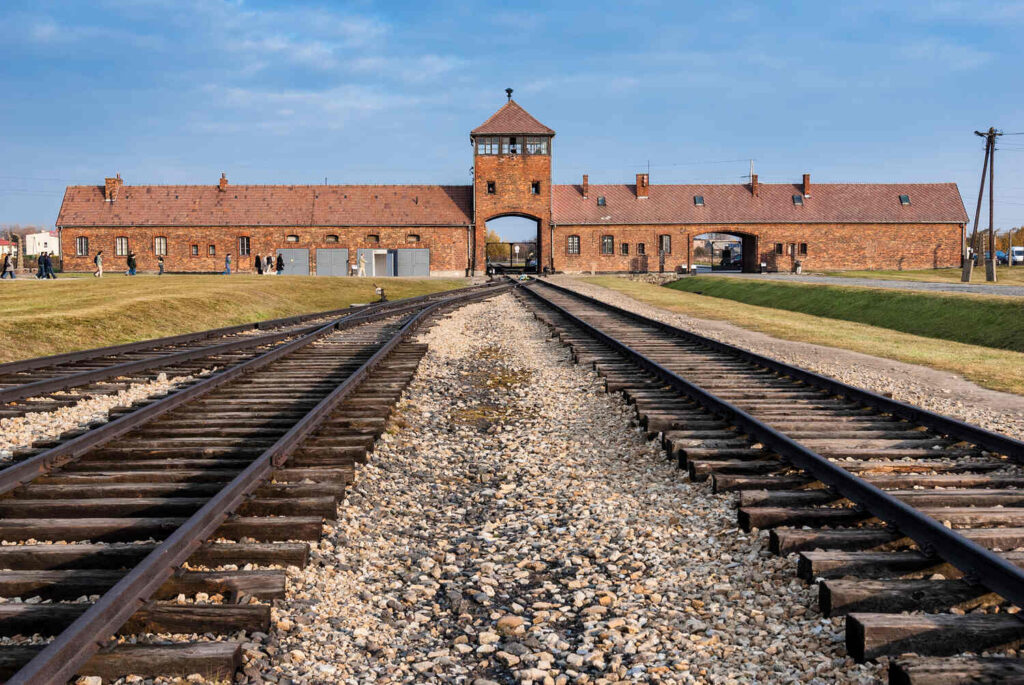
Expansion Into Auschwitz II-Birkenau
As the Nazis’ genocidal policies intensified, they needed bigger facilities to carry out mass killings. Construction of Auschwitz II-Birkenau began in October 1941 near the village of Brzezinka (Birkenau in German).
Birkenau was designed to hold 200,000 prisoners and it was to be the largest of the Auschwitz camps. It had rows of barracks, watchtowers, and barbed wire fences, a symbol of the industrial scale of the Nazi extermination programme.
Birkenau as an Extermination Camp
By 1942, Birkenau had become a concentration camp and the main site for the “Final Solution” – the Nazi plan to wipe out the Jewish population of Europe. Jews from all over the continent were deported to Birkenau – from Poland, Hungary, France, and the Netherlands.
Talking about the Netherlands, Anne Frank’s diary is one of the best books about Auschwitz and the Holocaust, and we highly recommend reading it before visiting the concentration camps.
Birkenau became the place of mass killings, using gas chambers to murder prisoners en masse.
Gas Chambers and Crematoria
The Nazis introduced gas chambers in Birkenau to speed up the process of extermination. Zyklon B, a cyanide-based pesticide, was used in the gas chambers to kill thousands at a time.
The crematorium was built to burn the bodies and the ashes were often scattered in the fields or rivers nearby. The cold calculation of mass murder at Birkenau shows the sheer scale of the Holocaust.

Auschwitz III (Monowitz) and Satellite Camps
Auschwitz III, also known as Monowitz, was established in 1942 as a labor camp to support German industry during the war. Prisoners were forced to work in terrible conditions at the I.G. Farben synthetic rubber factory and other industrial sites. The work was hard and the mortality rate was high due to exhaustion, malnutrition and exposure to toxic substances. Monowitz was the epitome of forced labor for profit.
Satellite Camps
Around the main Auschwitz complex, there were over 40 satellite camps. These smaller camps provided labor to coal mines, armament factories and farms. Prisoners faced the same brutal conditions as in the main camps.
The satellite camps extended the reach of Auschwitz’s oppressive system and deepened the camp’s role in the Nazi war machine.
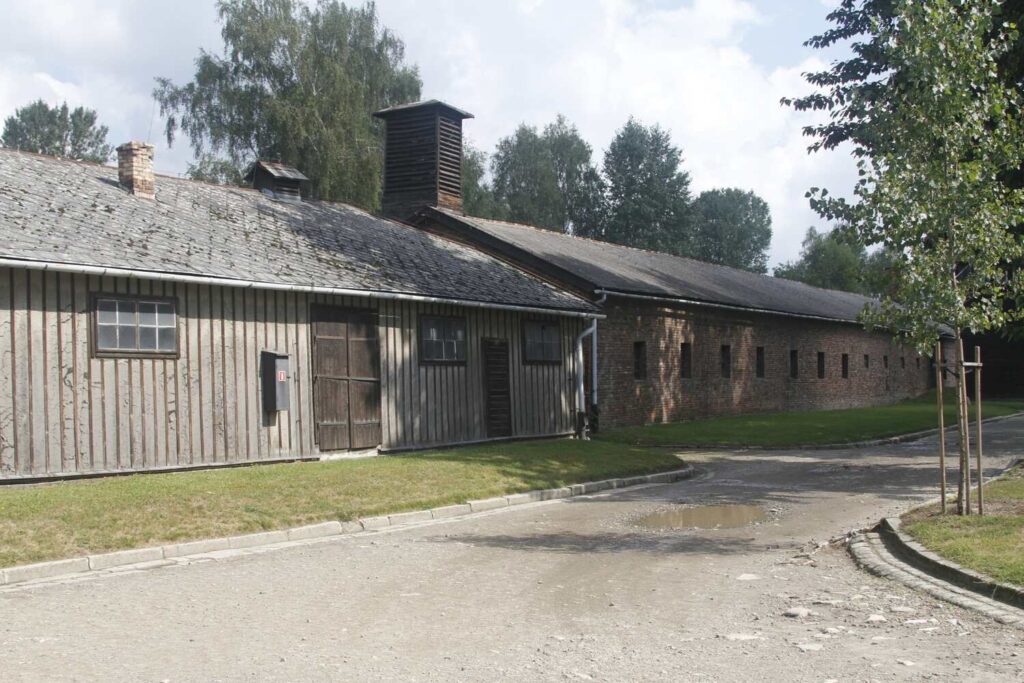
Daily Life and Conditions in Auschwitz
Life in Auschwitz was brutal. Prisoners were crammed into overcrowded barracks, with no sanitation and minimal food. Forced labour was relentless, from dawn till dusk, rain or shine. Disease was rife and medical care was non-existent.
Death was a daily reality, whether through execution, illness or exhaustion. Unfortunately, when visiting Auschwitz from Warsaw or Krakow, you can still feel the heavy conditions that prisoners had to go through every single day.
On arrival at Auschwitz, prisoners were subjected to a selection process by SS officers. Families were torn apart as men, women, and children were separated. Those fit for work were sent to work, others – the old, the sick, and young children – were sent straight to the gas chambers.
This was dehumanising and traumatic, stripping people of their dignity and sending them to immediate or eventual death.
Medical Experiments
Auschwitz was also the location of barbaric medical experiments carried out by Nazi doctors, most notably Dr. Josef Mengele, the “Angel of Death”.
Prisoners were subjected to inhumane procedures without consent, anaesthesia, or regard for their well-being. Experiments included sterilisation, exposure to disease, and surgical mutilations.
hese were justified as scientific progress and racial ideology, leaving survivors with lifelong physical and psychological scars.

Resistance and Attempts to Escape in 1945
Despite the brutal conditions, resistance existed inside Auschwitz. Underground networks formed among prisoners to share information and support each other.
Some inmates sabotaged work, wrote in secret, or documented Nazi crimes. These acts of defiance were risky, as discovery meant torture or death, but they gave people a sense of hope and humanity.
Breakout from Auschwitz was almost impossible due to the high security and the penalties. But there were some, like Witold Pilecki, a Polish officer who volunteered to go into Auschwitz to gather intel for the resistance.
Pilecki escaped and sent back valuable reports on the camp. Other prisoners broke out, sometimes successfully, but often at great risk to themselves and others, as the Nazis would punish with brutality.
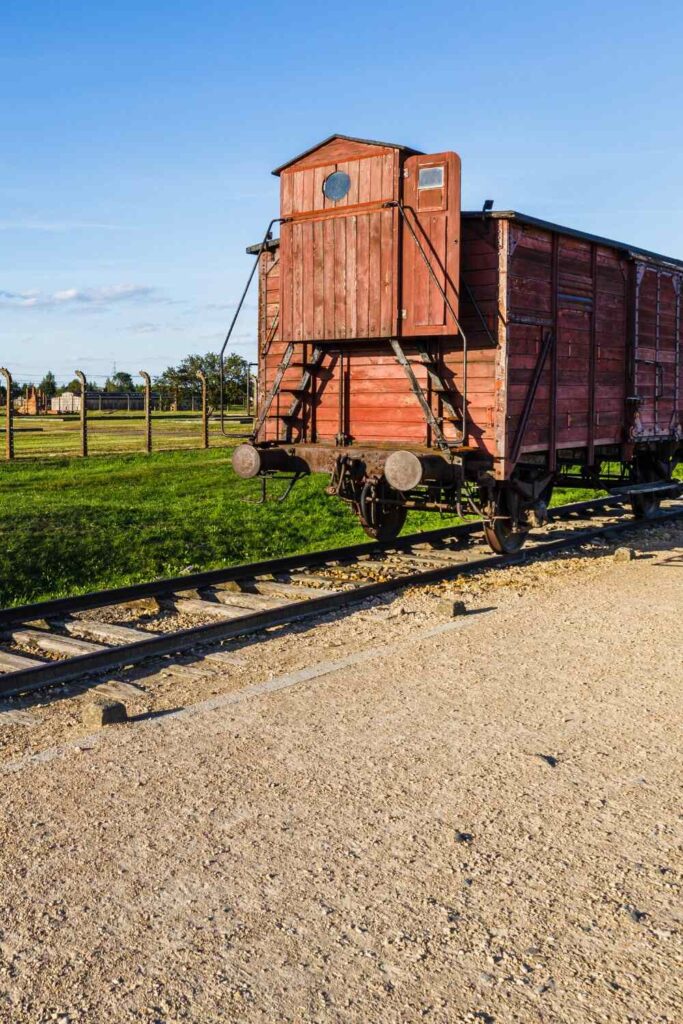
The Liberation of Auschwitz
By 1944 the Soviet Red Army was advancing westwards and the Nazis were panicking. They were evacuating Auschwitz, forcing tens of thousands of prisoners on death marches to camps deeper into Germany.
They were also destroying the evidence of their crimes by blowing up the gas chambers and crematoria.
January 27, 1945: Liberation Day
On January 27, 1945 Soviet troops entered Auschwitz and liberated the remaining prisoners. They found around 7,000 survivors, most of them in a state of starvation and disease.
They found warehouses full of personal belongings: hundreds of thousands of men’s suits, women’s clothes, pairs of shoes – a grim reminder of the millions who had been murdered.
After liberation survivors had to rebuild their lives in a state of physical and emotional trauma. The world started to learn about the extent of the atrocities. The Nuremberg Trials and other post-war trials would bring Nazi war criminals to justice. The liberation of Auschwitz was a turning point in the world’s recognition of the Holocaust.
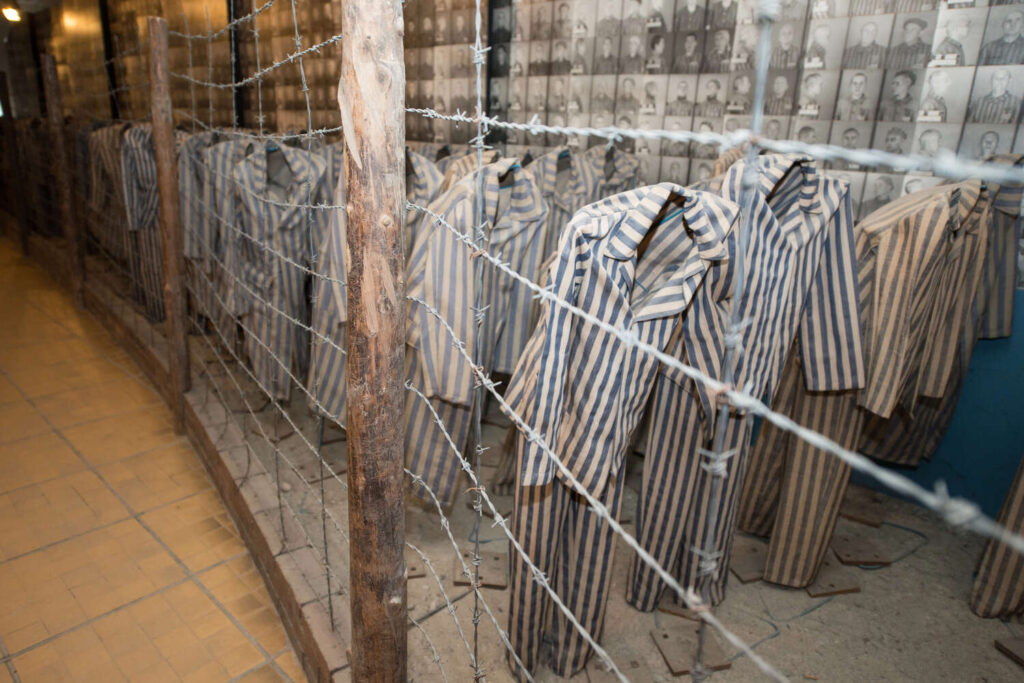
Auschwitz as a Memorial Site and Museum
After the liberation, in 1947, the Polish government created the Auschwitz-Birkenau State Museum to preserve the site as a monument to the horrors.
The original buildings were left intact and exhibitions were put in place to educate visitors about the camp. It’s a place of mourning and reflection, to remember the victims.
UNESCO World Heritage Site
In 1979 Auschwitz-Birkenau was designated a UNESCO World Heritage Site, as a symbol of genocide and a warning to humanity. Preservation work continues to keep the site intact so future generations can learn from this dark chapter of history. Educational programs and memorial events are held regularly to raise awareness and understanding.
The Aftermath
Auschwitz has become the symbol of the Holocaust and the extreme consequences of unchecked hate and prejudice. It’s a focal point for Holocaust education worldwide, highlighting human rights, tolerance and the dangers of authoritarianism. Museums, educational institutions and memorial days keep the memory alive, to talk about preventing future genocides.
Survivor stories are crucial to convey the reality of Auschwitz. Famous survivors like Elie Wiesel, Primo Levi and Viktor Frankl have shared their experiences through books and lectures, giving us a personal insight into the camp.
Their testimonies put faces to the numbers and make sure individual stories are not forgotten. These stories are part of the historical record and moral understanding.
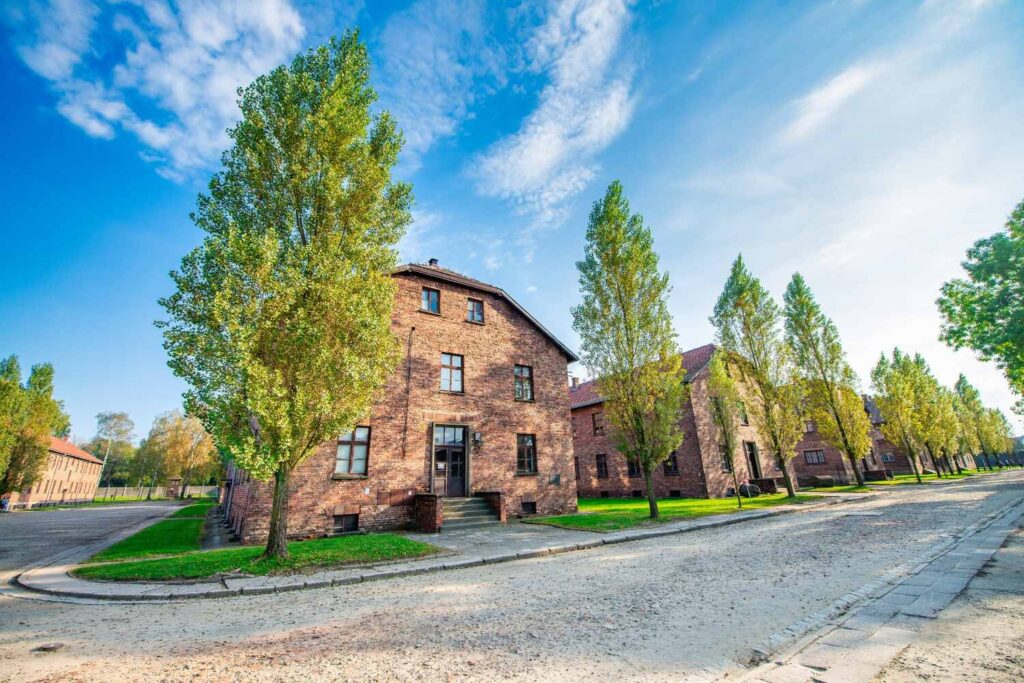
Conclusion
Auschwitz is a brutal reminder of human evil and the consequences of intolerance and dehumanization. From concentration camps to extermination and labor camps, Auschwitz is the most powerful symbol of the Nazi regime in the world.
The liberation of Auschwitz meant the end of the suffering for the prisoners but the beginning of the world’s reckoning with the Holocaust.
We must remember Auschwitz so this never happens again. As a memorial and museum, it’s a testament to human resilience and the importance of human dignity. The legacy of Auschwitz influences education, policy and collective memory, a warning against hatred and oppression.
